#pulse induction detector
Explore tagged Tumblr posts
Text

Ancient rocks may bring dark matter to light
With new imaging capabilities, the first successful dark-matter detector might be some old rock
The visible universe — all the potatoes, gas giants, steamy romance novels, black holes, questionable tattoos, and overwritten sentences — accounts for only 5 percent of the cosmos.
A Virginia Tech-led team is hunting for the rest of it, not with telescopes or particle colliders, but by scrutinizing billion-year-old rocks for traces of dark matter.
In leading a transdisciplinary team from multiple universities on this unconventional search, physics’ Patrick Huber is also taking an unconventional step: from theoretical work into experimental work.
With support from a $3.5 million Growing Convergence Research award from the National Science Foundation and a separate $750,000 award from the National Nuclear Security Administration, Huber is building a new lab in Robeson Hall to test dark matter theories — and see what else might come to light along the way.
Dark matter is super dark
Scientists can only infer dark matter’s existence because objects in the universe fall faster than they should around the center of galaxies. Gravity from this unseen substance accounts for the extra oomph.
Unlike the bump and grind of regular stuff, dark matter is thought to interact only very weakly with other matter, imperceptible except when one happens to bump into a nucleus of a visible matter atom. Recoiling from the collision like an atomic billiard ball, the nucleus deposits a spark of energy.
Over the past 50 years, physicists have conducted all manner of dark-matter experiments in hopes of witnessing one of these rare recoil events.
So far? Dark matter has stayed dark. Physicists haven’t turned up any hard evidence for dark matter. Now they’re turning down — deep down.
Paleodetectives
If dark matter exists, there’s a chance it has interacted with the Earth at some point in its 4.6 billion-year-old history. What if, instead of waiting for dark matter to come to them, scientists could excavate ancient evidence from minerals deep in the Earth?
While the idea for using rocks as subterranean detectors was first proposed in the 1980s, technological advances prompted researchers, including Huber, to revisit this idea.
“It’s crazy. When I first heard about this idea, I was like — this is insane. I want to do it,” said Huber, the William E. Hassinger, Jr. Senior Faculty Fellow.
Huber, being a theoretical physicist, came up with a theory of how to solve it. But the theory wasn’t enough. If this plan was possible, he wanted to see what it would take to execute it.
“Other people in their midlife crisis might take a mistress or get a sports car. I got a lab,” Huber said.
Who knocked the nuclei?
By developing and using sophisticated imaging techniques, Huber and his collaborators hope to uncover miniature trails of destruction left by long-ago dark matter interactions inside crystal lattice structures.
When a high-energy particle bounces off a nucleus inside a rock, the explosive recoil can pop a nucleus out of place, said Vsevolod Ivanov, a researcher at the Virginia Tech National Security Institute who is collaborating with Huber. The ejected nucleus and the empty gap it leaves behind represent structural changes within crystal.
“We’ll take a crystal that’s been exposed to different particles for millions of years and subtract the distributions that correspond to things we do know,” Ivanov said. “Whatever is left must be something new, and that could be the dark matter.”
Most dark matter experiments are conducted underground to cut back on interference from other high-energy particles called cosmic rays, but going underground presents a new set of problems. The planet pulses with a radioactive background that can also jostle nuclei. University Distinguished Professor Robert Bodnar, recently inducted into the National Academy of Sciences, will be working with Huber’s team to identify, locate, and characterize minerals that could serve as suitable detectors.
Proof in 3D
To start in on this massive imaging task, Huber is working with researchers at the University of Zurich’s Brain Research Institute who provided access to special microbiology imaging technology typically used to image animal nervous systems.
The team has already started generating 3D renderings of high-energy particle tracks in synthetic lithium fluoride. This artificial crystal won’t make a good dark-matter detector, said Huber, but it will help establish the full range of signals while keeping the crystal intact. In an unexpected twist, applications of lithium fluoride imaging technology include “nuclear transparency devices,” which might look like backpack-sized monitoring devices for nuclear reactors.
With tangential outputs from this “insane” research objective already proving of immediate value, Huber his collaborators will dig deeper and look closer to see if an old rock can tell us how the stars fly around the galaxy.
IMAGE: Ph.D. candidate Keegan Walkup (at left) and physicist Patrick Huber work in the new lab that Huber is establishing to look for evidence of dark matter inside the crystal lattice structures of old rocks. Credit Photo by Spencer Coppage for Virginia Tech.
3 notes
·
View notes
Text
EXPLORING THE 5 COOL PARTNER SELLER ELECTRONICS PRODUCTS-Part1
Exploring the 5 Cool Partner Seller Electronics Products
Prologue
Are you an electronics enthusiast looking to expand your electronics project repertoire? Want to take your skills to the next level by exploring new and exciting products? Look no further than our list of five cool electronics products from partner sellers!
Whether you’re interested in building your own smart home devices, experimenting with sensors, or creating your own robot, these products are sure to inspire you. They cover a lot of application areas, from loop detectors used to monitor vehicle count in parking garages to Arduino CNC shields used in CNC machines, from simple pulse sensors used to detect cardiovascular pulse signals from fingertip to RGB LED panel light used in smart home, these products are unique, compact, and functional. Not only are these products fun to build and use but they’re also designed to help you learn new skills and techniques along the way.
What’s more, these products all come from trusted partner sellers who are committed to developing high-quality products. They’re happy to provide technical support for customers who have questions, so you can be sure you’re getting the best in electronics.
So get ready to dive into the world of electronics and explore these five cool partner seller products. You’re sure to find something that piques your interest and takes your own electronics projects to the next level.
Inductive Loop Vehicle Detector by Elektronika-ba
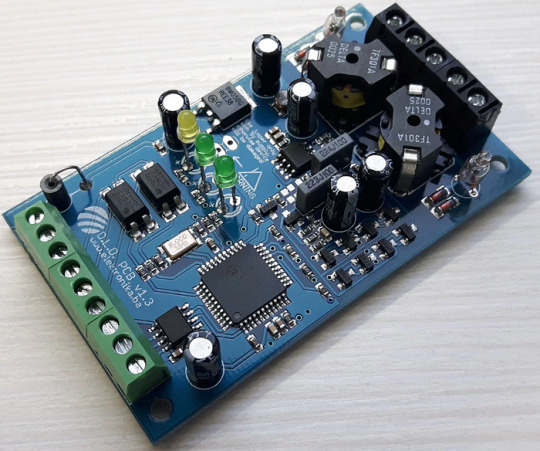
Whether you need to monitor occupancy and count vehicles in parking garages, control vehicle access at door and barrier controls, or facilitate traffic light installations and traffic controllers, the inductive loop detector is the perfect solution. It can even detect the direction and speed of vehicle traffic, making it an invaluable tool for a variety of traffic-related applications. In addition, this device can function as a stand-alone speed trap and can be easily interfaced with Arduino.
We can also provide a pre-programmed PIC chip to meet your project requirements.
Specifications
Number of operating modes: 4
Tuning: Automatic
Detection type: Presence/Pulse
Presence time: Adjustable in 3 steps
Pulse duration: 250 ms / 500 ms
Signal filtering: Adjustable in 2 steps (NORMAL, HIGH)
Loop inductance: 20 uH — 1000 uH
Frequency range: 20 kHz — 145 kHz
Frequency selection: 2 combinations (LOW, HIGH)
Sensitivity: Maximum 0.0025% Δf/f, adjustable in 8 steps
Detection speed: 10 ms by default, adjustable
Start-up time: ~ 1 second per channel (or longer if the frequency is not stable)
Temperature range: -35°C — 120°C
Sensor protection: Galvanic isolation + gas discharge tube for lightning protection
Don’t settle for less — click here to learn more about the Inductive Loop Vehicle Detector and experience the compact, yet cool detector!
Arduino CNC Shield V3.51 by Protoneer
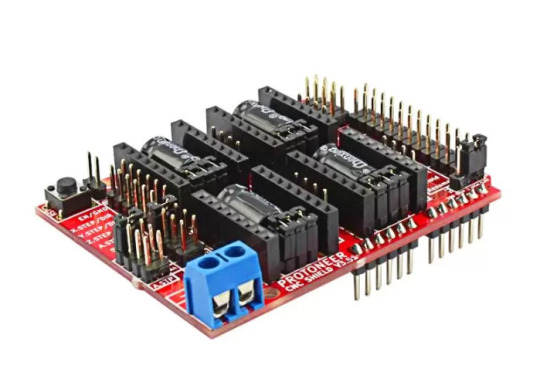
Designed by Protoneer, this kit is packed with features to ensure high precision control of your stepper motors, you can use it to easily build small CNC routers, DIY laser cutters, 3D printers, or any project that requires precise stepper motor control.
Our latest version 3.51 includes several enhancements to make assembly and installation even easier. We’ve added end-stop and probe signal filtering circuitry to eliminate false triggers and allow the use of unshielded cables for end-stops and probes. We’ve also increased the size of the solder pads for easier assembly and updated the probe pin labels to make installation a breeze.
With the Arduino CNC Shield Kit, you’ll have everything you need to build your own CNC router or mill with ease.
Features
Includes Noise Filers on all end stops and the probing pin. (New in V3.51)
GRBL 0.9 compatible. (Open source firmware that runs on an Arduino UNO that turns G-code commands into stepper signals https://github.com/grbl/grbl)
4-Axis support (X, Y, Z, A-Can duplicate X, Y, Z or do a full 4th axis with custom firmware using pins A4 and A3)
2 x End stops for each axis (6 in total)
Coolant enable
Uses removable Pololu A4988 compatible stepper drivers. (A4988, DRV8825 and others)(Not Included)
Jumpers to set the Micro-Stepping for the stepper drivers. (Some drivers like the DRV8825 can do up to 1/32 micro-stepping )
Compact design.
Stepper Motors can be connected with 4-pin molex connectors or soldered in place.
Runs on 12–36V DC. (At the moment only the Pololu DRV8825 drivers can handle up to 36V so please consider the operation voltage when powering the board.)
Don’t wait — click here to see more about the Arduino CNC Shield V3.51 and start your next project today!
Easy Pulse Mikro by Embedded Lab
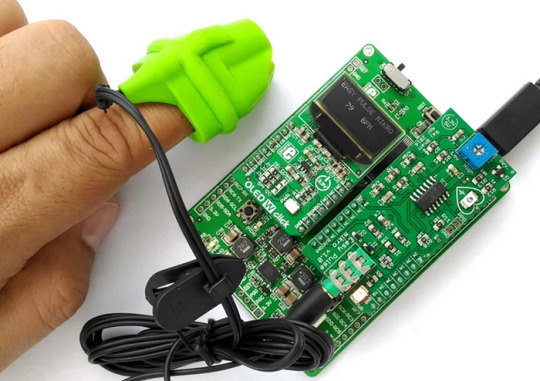
What’s more, the Easy Pulse Mikro is designed in the convenient Mikro bus form factor, making it easy to integrate with a wide range of mikroElektronika’s development boards. With all necessary instrumentation and amplification built right in, this powerful sensor provides a clean and precise analog PPG waveform output that’s routed to the AN pin of the mikroBus connector.
Whether you’re a hobbyist, student, or professional developer, the Easy Pulse mikro is the perfect tool for monitoring heart rate and other vital signs.
Click here to see more about the Easy Pulse mikro.
Features
Compatible with mikroBus socket.
Filtered and amplified analog PPG signal output
On-board potentiometer for adjusting amplifier gain, if needed (rotate clock-wise for increasing gain)
Onboard LED for indicating heartbeat. It flashes synchronously with the heartbeat on detecting the pulse from the fingertip.
2 notes
·
View notes
Text
Unlocking Asia’s Gold Potential with Advanced Detectors
Introduction
As we delve into the world of gold prospecting, Asia emerges as a pivotal region brimming with untapped potential. With its rich history intertwined with gold mining and an ever-evolving technological landscape, there's no better time than now to explore the capabilities of advanced gold detectors. This article seeks to illuminate the various aspects of gold detection in Asia, offering insights into different countries like Zambia, Zimbabwe, Turkey, the USA, UAE, and Iran. By understanding how these detectors function and their significance in various geographical contexts, we can unlock Asia’s gold potential with advanced detectors.
The Importance of Gold Detectors in Mining
Gold detection technology has made significant strides over the years. But why are these devices so crucial for miners?
What is a Gold Detector?
A gold detector is a specialized electronic device designed to locate buried gold detector Asia metallic objects. These devices come equipped with advanced sensors capable of detecting gold at varying depths and soil conditions.
How Do Gold Detectors Work?
The basic principle behind a gold detector involves electromagnetic fields. When a detector passes over a metal object, it disrupts the field, allowing the device to identify the presence and depth of the object.
Types of Gold Detectors Available VLF Detectors: Very Low Frequency detectors are excellent for detecting smaller nuggets. PI Detectors: Pulse Induction detectors work better in mineralized soils where VLF might struggle.
Understanding these types helps miners choose the right equipment based on their specific needs.
Regional Focus: Gold Detection Across Asia Gold Detector in Zambia
Zambia has recently experienced an uptick in gold mining activities. With its abundant mineral resources, finding a reliable gold detector in Zambia is key for local miners looking to tap into this growing market.
Gold Detector in Zimbabwe
Zimbabwe's rich history in mining makes it a hotspot for prospectors. The demand for effective tools like the gold detector in Zimbabwe continues to rise as more individuals seek to uncover hidden treasures within its vast landscapes.
Gold Detector in Turkey
Turkey stands out with its unique geological formations favorable for gold deposits. Hence, investing in a high-quality gold detector in Turkey becomes essential for both amateur and professional miners alike.
Gold Detector in USA
In America, especially within states like California and Nevada, using a quality gold detector in USA can mean the difference between striking it rich or going home empty-handed.
Gold Detector in UAE
With recent explorations revealing substantial gold reserves, there is an increasing need for advanced detection systems like the gold detector in UAE, making it critical for investors looking into this lucrative market.
Gold Detector in Iran
Iran's untapped reserves present an exciting opportunity for miners. Thus, acquiring cutting-edge technology suc
0 notes
Video
youtube
How to Ground Balance a Pulse Induction Metal Detector
0 notes
Text
Types of metal detectors
Types of metal detectors vary according to a range of hopes and technical features and different classifications,
for example, according to the search technology or depth of search or the technology of the device or tool used
to conduct the search or detection.
There are many types of metal detectors, here in this article, we will see the details….
A metal detector is an electronic device specially designed to detect buried underground metal objects
such as the treasures of gold, archaeological treasures of ancient civilizations, and various kinds
of precious and non-precious metals.
Metal detectors are used by prospectors and treasure hunters.
They help detect any metal object under the ground for varying depths depending on the device.
This enables the prospector to find all metallic objects such as gold ornaments, statues, ancient coins made of gold, silver, or copper, and so on.
Metal detectors are very diverse. so there are many types of metal detectors that are classified according to different classifications.
Metal detectors can be classified according to their uses or according to the search system
and the technology in the device or according to other factors.
But the most commonly used classification is according to the search technology of the device,
where metal detectors are classified into several types will be reviewed by the following paragraph
Types of Metal Detectors
Electromagnetic Metal Detectors
Electromagnetic metal detectors are operated according to one of two search technologies. :
very low frequency (VLF) or pulse induction technology (PI) which depends on a search coil used to
detect the presence of different metals, including gold within the search area below the coil
and then it gives an alert to the user in the form of audio tone according to certain tones depending on the type of metal.
These devices have a limited scope of depth (maximum : 3 meters) and relatively cheap prices
however, It is the most widespread device in the world especially for beginners
Examples: Gmt 9000, Impact Pro, Pulse Nova
Long-Range Metal Detectors
The long-range metal detectors use search antennas to receive target signals
buried underground remotely. These devices are characterized by a very wide field
of scan and huge search depths compared to other types of metal detectors
Long-range devices are easy to use and filter the search results and search within large distances
and large areas with the possibility of estimating depth
Examples: Gold Star, mega scan pro
3D Imaging Metal Detectors
3D Imaging metal detectors are devices that use special probes for ground scanning.
Then the scan results are usually displayed on a computer screen or Tablet in a three-dimensional diagram
showing the structure of the ground in the search area and the targets buried in it.
However, these devices are characterized by high accuracy and coverage of a wide field of scan and multiple features
that ensure accurate results for the prospector and professional searcher.
Examples: Nokta Invenio Pro, OKM EXP 6000, GOLD VISION, and Phoenix
Multi-Systems Metal Detectors
There are some metal detectors devices that may contain more than one search system
however, it uses different technologies within a single device and this gives the prospector multiple
Search options are used for different applications or to confirm the results of other search systems.
Example: Gold Star 3D Scanner includes 8 search systems: - 8 search systems for all metal detection applications including: Manual Sensing System - Controllable Sensing - Automatic Sensing System - Ionic System Bionic System - 3D Ground Scan System - Live Stream Scan System - Pinpointer Target Positioning System
0 notes
Text
Metal Detector Price in Bangladesh

Metal Detector Price in Bangladesh: A Comprehensive Guide
Power Ark Engineering is your trusted source for high-quality metal detectors price in Bangladesh. Whether you're a hobbyist, a security professional, or a treasure hunter, we offer a wide range of metal detectors to suit your specific needs.
Understanding Metal Detectors
Metal detectors work by emitting electromagnetic waves that interact with metal objects. When the waves encounter metal, they induce an electrical current in the metal, which is then detected by the detector. This allows you to locate metal objects hidden beneath the surface.
Factors Affecting Metal Detector Price
Several factors influence the price of a metal detector, including:
Sensitivity: More sensitive detectors can detect smaller or deeper metal objects.
Frequency: The frequency of the detector determines its depth penetration and sensitivity to different types of metals.
Features: Additional features like discrimination (the ability to differentiate between different types of metals), pinpointing (locating the exact position of a metal object), and audio output can increase the price.
Brand: Established brands often command higher prices due to their reputation and quality.
Metal Detector Types Available in Bangladesh
Handheld Metal Detectors: These are portable and easy to use. They are ideal for general metal detecting and security applications.
Pulse Induction (PI) Metal Detectors: PI detectors are known for their deep penetration and ability to detect large metal objects. They are popular for treasure hunting and relic hunting.
Very Low Frequency (VLF) Metal Detectors: VLF detectors offer good sensitivity and discrimination capabilities. They are suitable for a wide range of metal detecting activities.
Treasure Hunting Metal Detectors: These detectors are specifically designed for finding valuable metal objects like gold, silver, and coins. They often have advanced features like discrimination and pinpointing.
Security Metal Detectors: Security metal detectors are used in airports, government buildings, and other high-security areas to detect concealed weapons or metal objects.
Metal Detector Price Range in Bangladesh
The price of metal detectors in Bangladesh varies widely depending on the type, features, and brand. Here's a general price range:
Handheld Metal Detectors: Starting from BDT 5,000 to BDT 20,000.
Pulse Induction (PI) Metal Detectors: Starting from BDT 15,000 to BDT 50,000.
Very Low Frequency (VLF) Metal Detectors: Starting from BDT 10,000 to BDT 30,000.
Treasure Hunting Metal Detectors: Starting from BDT 20,000 to BDT 100,000 or more.
Security Metal Detectors: Starting from BDT 50,000 to BDT 200,000 or more.
Choosing the Right Metal Detector for You
When selecting a metal detector, consider your specific needs and budget. Ask yourself:
What type of metal detecting will you be doing?
How deep do you need to detect metal objects?
What features are important to you?
How much are you willing to spend?
Power Ark Engineering offers a wide range of metal detectors to suit various needs. Our knowledgeable staff can help you choose the right detector based on your requirements.
0 notes
Text
Desktop Security Scanner Market Size,Volume,Revenue Trends Analysis Report 2024-2030
Global Info Research announces the release of the report “Global Desktop Security Scanner Market 2024 by Manufacturers, Regions, Type and Application, Forecast to 2030” . The report is a detailed and comprehensive analysis presented by region and country, type and application. As the market is constantly changing, the report explores the competition, supply and demand trends, as well as key factors that contribute to its changing demands across many markets. Company profiles and product examples of selected competitors, along with market share estimates of some of the selected leaders for the year 2024, are provided. In addition, the report provides key insights about market drivers, restraints, opportunities, new product launches or approvals, COVID-19 and Russia-Ukraine War Influence.
According to our (Global Info Research) latest study, the global Desktop Security Scanner market size was valued at USD million in 2023 and is forecast to a readjusted size of USD million by 2030 with a CAGR of % during review period. Desktop Security Scanner is an instrument used to detect whether it contains metal foreign objects. Desktop Security Scanner consists of a metal detector and an automatic rejection device, of which the detector is the core part. The system can use the alarm signal to drive an automatic rejection device, etc., so as to exclude metal impurities from the production line. The Global Info Research report includes an overview of the development of the Desktop Security Scanner industry chain, the market status of Food (Pulse Induction, Very Low Frequency), Pharmaceutical (Pulse Induction, Very Low Frequency), and key enterprises in developed and developing market, and analysed the cutting-edge technology, patent, hot applications and market trends of Desktop Security Scanner. Regionally, the report analyzes the Desktop Security Scanner markets in key regions. North America and Europe are experiencing steady growth, driven by government initiatives and increasing consumer awareness. Asia-Pacific, particularly China, leads the global Desktop Security Scanner market, with robust domestic demand, supportive policies, and a strong manufacturing base. Key Features:
Global Desktop Security Scanner market size and forecasts, in consumption value), sales quantity, and average selling prices, 2019-2029
Global Desktop Security Scanner market size and forecasts by region and country, in consumption value, sales quantity, and average selling prices, 2019-2029
Global Desktop Security Scanner market size and forecasts, by Type and by Application, in consumption value, sales quantity, and average selling prices, 2019-2029
Global Desktop Security Scanner market shares of main players, shipments in revenue, sales quantity, and ASP, 2019-2024
The Primary Objectives in This Report Are:
To determine the size of the total market opportunity of global and key countries
To assess the growth potential for Desktop Security Scanner
To forecast future growth in each product and end-use market
To assess competitive factors affecting the marketplace
This report profiles key players in the global Desktop Security Scanner market based on the following parameters - company overview, production, value, price, gross margin, product portfolio, geographical presence, and key developments.
The report involves analyzing the market at a macro level: Market Sizing and Segmentation: Report collect data on the overall market size, including the sales quantity (K Units), revenue generated, and market share of different by Type: Pulse Induction Very Low Frequency Beat-frequency Oscillation Industry Analysis: Report analyse the broader industry trends, such as government policies and regulations, technological advancements, consumer preferences, and market dynamics. This analysis helps in understanding the key drivers and challenges influencing the Desktop Security Scanner market. Regional Analysis: The report involves examining the Desktop Security Scanner market at a regional or national level. Report analyses regional factors such as government incentives, infrastructure development, economic conditions, and consumer behaviour to identify variations and opportunities within different markets. Market Projections: Report covers the gathered data and analysis to make future projections and forecasts for the Desktop Security Scanner market. This may include estimating market growth rates, predicting market demand, and identifying emerging trends. The report also involves a more granular approach to Desktop Security Scanner: Company Analysis: Report covers individual Desktop Security Scanner manufacturers, suppliers, and other relevant industry players. This analysis includes studying their financial performance, market positioning, product portfolios, partnerships, and strategies. Consumer Analysis: Report covers data on consumer behaviour, preferences, and attitudes towards Desktop Security Scanner This may involve surveys, interviews, and analysis of consumer reviews and feedback from different by Application: Food Pharmaceutical Industry Others
Technology Analysis: Report covers specific technologies relevant to Desktop Security Scanner. It assesses the current state, advancements, and potential future developments in Desktop Security Scanner areas. Competitive Landscape: By analyzing individual companies, suppliers, and consumers, the report present insights into the competitive landscape of the Desktop Security Scanner market. This analysis helps understand market share, competitive advantages, and potential areas for differentiation among industry players. Market Validation: The report involves validating findings and projections through primary research, such as surveys, interviews, and focus groups.
The Main Contents of the Report, includes a total of 15 chapters:
Chapter 1, to describe Optical Tweezers (Mechanobiology Equipment) product scope, market overview, market estimation caveats and base year.
Chapter 2, to profile the top manufacturers of Optical Tweezers (Mechanobiology Equipment), with price, sales, revenue and global market share of Optical Tweezers (Mechanobiology Equipment) from 2019 to 2024.
Chapter 3, the Optical Tweezers (Mechanobiology Equipment) competitive situation, sales quantity, revenue and global market share of top manufacturers are analyzed emphatically by landscape contrast.
Chapter 4, the Optical Tweezers (Mechanobiology Equipment) breakdown data are shown at the regional level, to show the sales quantity, consumption value and growth by regions, from 2019 to 2030.
Chapter 5 and 6, to segment the sales by Type and application, with sales market share and growth rate by type, application, from 2019 to 2030.
Chapter 7, 8, 9, 10 and 11, to break the sales data at the country level, with sales quantity, consumption value and market share for key countries in the world, from 2017 to 2023.and Optical Tweezers (Mechanobiology Equipment) market forecast, by regions, type and application, with sales and revenue, from 2025 to 2030.
Chapter 12, market dynamics, drivers, restraints, trends and Porters Five Forces analysis.
Chapter 13, the key raw materials and key suppliers, and industry chain of Optical Tweezers (Mechanobiology Equipment).
Chapter 14 and 15, to describe Optical Tweezers (Mechanobiology Equipment) sales channel, distributors, customers, research findings and conclusion.
The analyst presents a detailed picture of the market by the way of study, synthesis, and summation of data from multiple sources by an analysis of key parameters. Our report on the Desktop Security Scanner market covers the following areas:
Desktop Security Scanner market sizing
Desktop Security Scanner market forecast
Desktop Security Scanner market industry analysis
Analyze the needs of the global Desktop Security Scannerbusiness market
Answer the market level of global Desktop Security Scanner
Statistics the annual growth of the global Desktop Security Scannerproduction market
The main producers of the global Desktop Security Scannerproduction market
Describe the growth factor that promotes market demand
Global Info Research is a company that digs deep into global industry information to support enterprises with market strategies and in-depth market development analysis reports. We provides market information consulting services in the global region to support enterprise strategic planning and official information reporting, and focuses on customized research, management consulting, IPO consulting, industry chain research, database and top industry services. At the same time, Global Info Research is also a report publisher, a customer and an interest-based suppliers, and is trusted by more than 30,000 companies around the world. We will always carry out all aspects of our business with excellent expertise and experience.
0 notes
Text
0 notes
Text
A Complete Guide to Underwater Metal Detectors
No matter how experienced you are or how new you are, diving into the ocean or just searching the beach for treasure has always been an exciting journey. This is true no matter how much training you have. In the past few years, underwater metal detectors have grown into tools that scuba divers, underwater travelers, and fans could not live without. Within the scope of this article, the best underwater metal detectors are broken down. The next part of the piece goes into more detail about pulse induction (PI) and very low frequency (VLF) detectors' depth ranges and uses, focusing on their use on beaches. It also talks about the differences between the two types of detectors.
The best metal detectors for underwater:
Picking the right underwater metal detector is very important for exploring the ocean floor. The capacity to delve deeply, sensitivity to various metals, metal discrimination, and lifespan are among the factors considered. You can get a top-tier model in the TGX PRO. Because of its versatility, dependability, and effectiveness, the detector is ideal for usage in both commercial and residential settings.

Detectors for Pulse Induction vs. VLF:
If you want to pick the right gadget for the water, you need to understand how pulse induction (PI) and very low frequency (VLF) monitors vary. The effectiveness of pulse induction detectors at depth and in soils heavily mined is well-known. Because of this, they are ideal for deep-sea exploration and hunting. However, due to their increased sensitivity to minute metal targets, VLF detectors are superior for usage in shallow water and during freshwater hunting. When it comes to distinguishing between targets, VLF detectors outperform PI detectors in terms of depth-detecting capabilities.
Metal detectors have the following depth ranges:
Underwater metal detectors have different depth ranges based on the technology they use, the size of their coils, and the condition of the ground. When it comes to depth, pulse induction detectors usually work better than VLF detectors. High-end pulse induction detectors can find metal targets up to several feet below the surface when conditions are just right. This makes them essential tools for exploring and recovering objects at depth in the ocean. That being said, it's important to keep in mind that real-depth performance may be different depending on things like target size, conductivity, and mineralization levels.
There are metal detectors on the beach.
Metal detectorists frequent beaches in the hopes of reclaiming valuables, including coins, jewelry, and other artifacts that have washed ashore. Choosing a metal detector for beachcombing becomes all the more critical when considering characteristics like discrimination, ground balance settings, and resistance. Pulse induction detectors work especially well for beach detection because they don't care about the minerals in salt water. This means that users can find targets that are hidden deep in the sand. Also, waterproof coils and shafts are needed to handle the rough environment of the beach and the odd dip in saltwater.
How good are metal detectors at finding gold?
There are two main types of metal detectors: regular detectors and those specifically designed to find gold. The unique characteristics of gold are the reason why gold detectors exist. When compared to all other metals, gold has a unique conductivity level. TGX PRO PLUS Metal detectors designed for gold typically have a discriminating feature that prevents them from picking up on other metals. You can get the same result with other types of metal detectors by adjusting their settings, but using a gold metal detector eliminates the guesswork.

FAQ
What is an underwater metal detector?
An underwater metal detector is a special tool used to find metal objects like coins, jewelry, or even sunken treasures underwater. It works by sending out signals that bounce off metal objects and then come back to the detector, letting you know where the metal is.
How does a gold detector work?
The search coil of a metal detector sends an electromagnetic field into the earth, which then finds any metal particles. Within the electromagnetic field, any metal objects (targets) will be activated and retransmit their electromagnetic field. The search coil of the detector picks up the retransmitted field and sends a target response to notify the user.
What makes the best metal detector?
Depending on the technology, coil size, and ground condition, underwater metal detectors have varying depth ranges. Pulse induction detectors are more accurate than very low frequency (VLF) detectors when measuring depth. Under ideal circumstances, state-of-the-art pulse induction detectors can locate metal targets many feet below ground.
What is Best gold detector ever made?
When it comes to the Best gold detector ever made, practically every company will boast that theirs is the finest available for gold prospectors. We have two best options TGX PRO PLUS and TGX LITE. Sadly, a lot of people acquire this apparatus and then realize it doesn't work and can't even identify the most basic metals, like keys and coins.

Are underwater metal detectors only for professionals?
Users of underwater metal detectors include people who like to explore or look for treasures that are hidden. That's not true. You can get more advanced detectors that are made for professionals, as well as detectors that are made for beginners and have features that are easy to use. No matter if you are a worker or a hobbyist, there is a metal detector that is made to be used underwater.
Conclusion:
It all comes down to budget when shopping for a gold detector. You can take a chance on the cheaper models of TGX LITE and see if they function. You may also get the expensive ones that come with all these extra features that you might never even use. Choose a gold detector that falls somewhere in the middle of the pricing range. They will complete the task with little to no fuss and at a fair fee.
#ecommerce#digital art#marketing#type#metal detector#golddetectors#treasure hunting#Goldxtra#TGXPRO#TGX PRO PLUS#TGX LITE#poetry
1 note
·
View note
Text
Types of metal detectors
Types of metal detectors vary according to a range of hopes and technical features and different classifications,
for example, according to the search technology or depth of search or the technology of the device or tool used
to conduct the search or detection.
There are many types of metal detectors, here in this article, we will see the details….
A metal detector is an electronic device specially designed to detect buried underground metal objects
such as the treasures of gold, archaeological treasures of ancient civilizations, and various kinds
of precious and non-precious metals.
Metal detectors are used by prospectors and treasure hunters.
They help detect any metal object under the ground for varying depths depending on the device.
This enables the prospector to find all metallic objects such as gold ornaments, statues, ancient coins made of gold, silver, or copper, and so on.
Metal detectors are very diverse. so there are many types of metal detectors that are classified according to different classifications.
Metal detectors can be classified according to their uses or according to the search system
and the technology in the device or according to other factors.
But the most commonly used classification is according to the search technology of the device,
where metal detectors are classified into several types will be reviewed by the following paragraph
Types of Metal Detectors
Electromagnetic Metal Detectors
Electromagnetic metal detectors are operated according to one of two search technologies. :
very low frequency (VLF) or pulse induction technology (PI) which depends on a search coil used to
detect the presence of different metals, including gold within the search area below the coil
and then it gives an alert to the user in the form of audio tone according to certain tones depending on the type of metal.
These devices have a limited scope of depth (maximum : 3 meters) and relatively cheap prices
however, It is the most widespread device in the world especially for beginners
Examples: Gmt 9000, Impact Pro, Pulse Nova
Long-Range Metal Detectors
The long-range metal detectors use search antennas to receive target signals
buried underground remotely. These devices are characterized by a very wide field
of scan and huge search depths compared to other types of metal detectors
Long-range devices are easy to use and filter the search results and search within large distances
and large areas with the possibility of estimating depth
Examples: Gold Star, mega scan pro
3D Imaging Metal Detectors
3D Imaging metal detectors are devices that use special probes for ground scanning.
Then the scan results are usually displayed on a computer screen or Tablet in a three-dimensional diagram
showing the structure of the ground in the search area and the targets buried in it.
However, these devices are characterized by high accuracy and coverage of a wide field of scan and multiple features
that ensure accurate results for the prospector and professional searcher.
Examples: Nokta Invenio Pro, OKM EXP 6000, GOLD VISION, and Phoenix
Multi-Systems Metal Detectors
There are some metal detectors devices that may contain more than one search system
however, it uses different technologies within a single device and this gives the prospector multiple
Search options are used for different applications or to confirm the results of other search systems.
Example: Gold Star 3D Scanner includes 8 search systems: - 8 search systems for all metal detection applications including: Manual Sensing System - Controllable Sensing - Automatic Sensing System - Ionic System Bionic System - 3D Ground Scan System - Live Stream Scan System - Pinpointer Target Positioning System
0 notes
Text
Gold detector in Dubai
Gold detector in Dubai
German technology has transformed gold detector into advanced tools for detecting hidden treasures and burials underground. In this article, we will take you to choose the best gold detector in Dubai and help Enthusiasts walk through the latest German metal detector from Mega Detectors Dubai, highlighting their advanced features and functions and addressing key FAQs to enhance their detection experiences
gold detector in Dubai
Mega Scan Pro New Edition
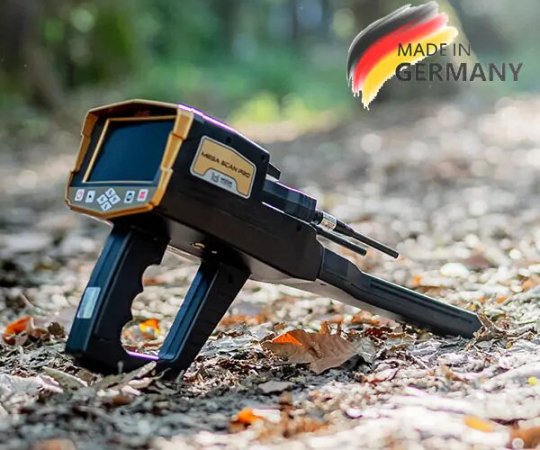
Introducing the Mega Scan Pro New Edition, the highly anticipated and upgraded version of the renowned and best-selling Mega Scan Pro metal detector
This new edition brings forth an array of exciting features and cutting-edge search systems, designed to enhance the treasure hunting experience like never before
With six versatile search systems catered to meet the diverse needs of treasure hunters, the Mega Scan Pro New Edition offers unparalleled versatility and adaptability
Whether you are searching for coins, relics, or precious metals or even tunnels, this device has all the tools to get you covered
GOLD STAR 3D SCANNER
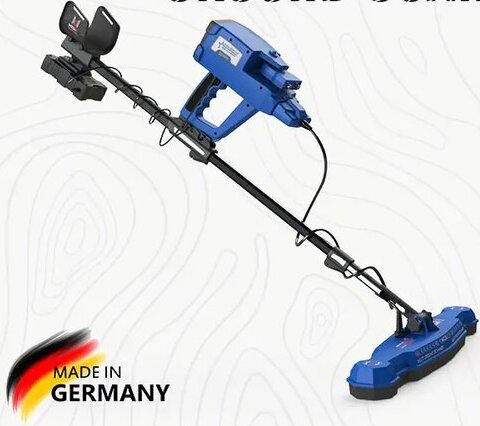
Gold Star 3D Scanner is a first entry in a new set of professional metal detectors from Mega Detection that brings a new detection technologies, powerful new tools and more reliable results
Gold Star 3D Scanner offers professional treasure hunters, gold seekers, archaeologists and even mining companies a most complete set of tools with completely new technologies such as M.G.S, I.M.T.U, VST and more, integrated into 8 search systems for all metal detection applications
PHOENIX
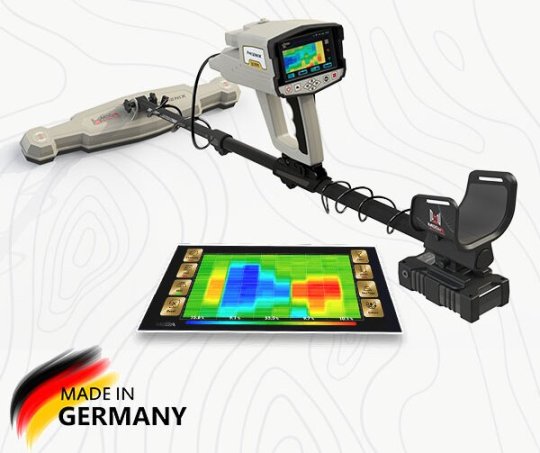
Phoenix metal detector is a 3D ground scanner with a completely new ground scanning technology that ensures faster and more accurate results in finding and detection of ancient treasures and burials at very great depths
Mega Detection company provides, via Phoenix 3D ground scanner, an effective professional device with 3 search systems suitable for professional prospectors and treasure hunters looking for antiquities and gold treasures
VIPER

Viper gold detector is a versatile multi-systems metal detector with powerful detection tools and different technologies that meet all needs of any serious prospector or treasure hunter, combines ease of use with complete control of detection settings and results visualization
Viper incorporates powerful Long-Range locator technology for remote target detection, plus a unique ionic field detection technology best for ancient burials detection, and the brand new Smart Detect technology based on enhanced Pulse Induction technology best for detection of small targets like coins , gold nuggets , jewelry and relics
CONCORD
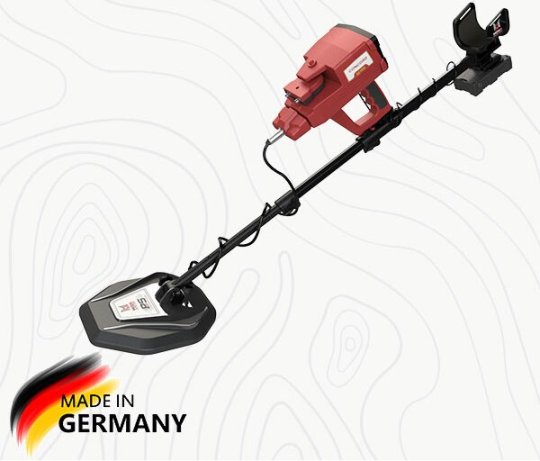
Concord metal detector is a powerful multi-systems metal detector that combines the functionality of enhanced Long-Range Locator technology for detection of deep metal objects from long distances within wide area, in addition to new unique Pulse Induction technology for detection which provides efficient detection of small metal objects such as coins and jewelry through a digital targets identify system to discriminate between different metals with accompanying acoustic feedback
INFINITY MAX PRO
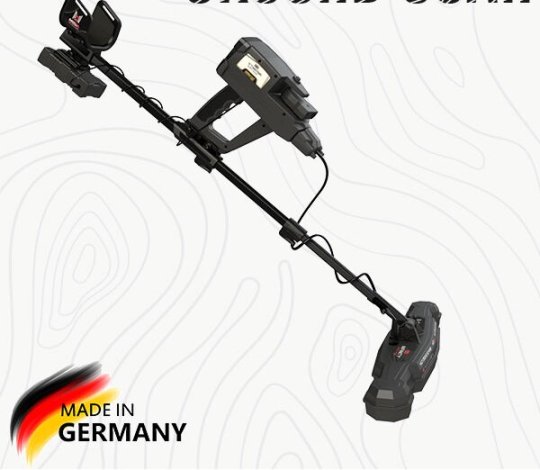
Infinity Max Pro metal detector is the most comprehensive and powerful metal detector in terms of metal detection technologies and detection tools available in the device, which cover a variety of metal detection applications that include the detection of deep treasures, gold prospecting , underground cavities and tunnels detection and many practical applications
0 notes
Text
An Insider’s Look at Professional Gold Detection Gear Available in the USA
Introduction
In the world of treasure hunting, gold remains one of the most coveted prizes. The thrill of uncovering a nugget of gold is an exhilarating experience that has lured adventurers, prospectors, and hobbyists alike for centuries. But to effectively hunt for gold, having the right equipment is crucial. This article provides an insider's look at professional gold detection gear available in the USA. From cutting-edge technology to budget-friendly options, we'll explore various types of gold detectors and their features, helping you make an informed decision on your next purchase.
Gold Detector: What You Need to Know Understanding Gold Detectors
A gold detector is a specialized metal detector designed to find gold nuggets and coins buried in the ground. These devices utilize United Arab Emirates gold detector advanced technology to differentiate between various metals, ensuring that users can pinpoint valuable targets amidst other debris.
Types of Gold Detectors VLF (Very Low Frequency) Detectors: Best for small gold nuggets. Highly sensitive but can struggle with mineralized soil. Pulse Induction Detectors: Work well in highly mineralized environments. Excellent depth capabilities but less sensitivity to tiny gold pieces. Multi-Frequency Detectors: Offer versatility by combining both VLF and Pulse Induction technologies. Suitable for various terrains and conditions. Choosing the Right Gold Detector
When selecting a gold detector, consider factors such as:
Terrain: Is it rocky or sandy? Type of Gold: Are you searching for large nuggets or fine flakes? Budget: High-end models offer advanced features but come at a price. The Best Gold Detectors Available in the USA Top Brands in Gold Detection Technology
When it comes to reliable and high-quality detectors, several brands stand out:
Minelab Garrett Fisher Whites Electronics Nokta Makro
These brands offer models that cater to both beginners and seasoned professionals.
Minelab Gold Monsters 1000
This model has gained immense popularity among treasure hunters due to its user-friendly design and exceptional sensitivity to smaller nuggets. It features:
Automatic ground tracking A lightweight build A high-frequency operation that enhances nugget detection Garrett AT Gold Metal Detector
Perfectly suited for diverse hunting environments, the Garrett AT Gold is waterproof and boasts an impressive discrimination feature, allowing users to filter out unwanted metals while focusing on finding precious gold.
Cost Considerations: How Much Should You Spend? Budget-Friendly Options vs. Premium Models
While premium models can exceed $1,500, there are quality detectors available starting around $200. Here’s a quick breakdown:
| Price Ran
0 notes
Text
Gold Detecting Metal Detector: Unleash the Hidden Treasures!
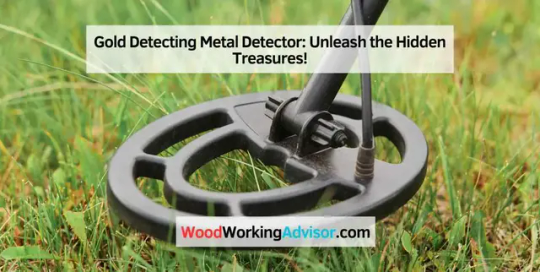
Are you searching for a reliable gold detecting metal detector? Look no further than the latest models from reputable brands like Minelab and Garrett for superior performance, accuracy, and efficiency in finding gold nuggets in various terrains. With advanced technology and ergonomic designs, these detectors offer enhanced sensitivity and depth range, making them ideal for both beginners and experienced prospectors. Whether you are exploring in the outback or near creeks, investing in a high-quality gold detecting metal detector can greatly improve your chances of striking gold. Join the ranks of successful treasure hunters and uncover hidden riches with the right tool for the job.

Credit: www.amazon.com
The History Of Gold Detecting
The history of gold detecting dates back to the 19th century, with the emergence of metal detectors revolutionizing the process. These tools have evolved significantly, utilizing advanced technology to identify gold deposits with greater precision. Today, gold detecting metal detectors play a crucial role in the exploration and extraction of this precious metal. The quest for gold detection methods dates back to ancient times. People have utilized various techniques to find gold deposits, evolving over centuries. Ancient Methods Of Gold Detection In ancient times, individuals relied on visual observation and physical prospecting to find gold. They would scan riverbeds for glimmering particles or gather and pan streams for traces. Evolution Of Gold Detecting Technology Advancements led to the creation of metal detectors, revolutionizing gold detection. Modern devices now use electromagnetic fields to locate gold deposits underground efficiently.
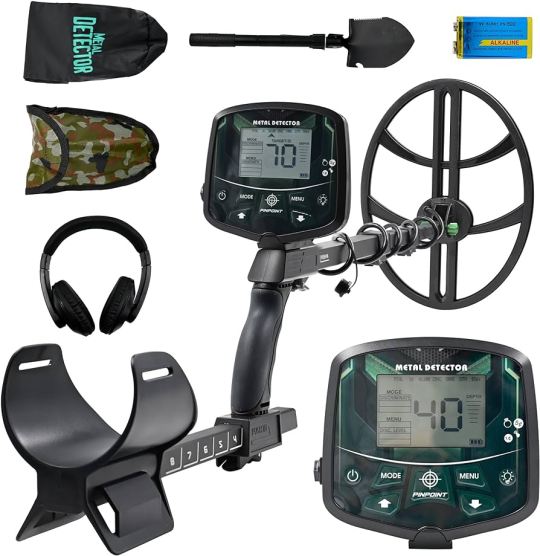
Credit: www.amazon.com
How Gold Detecting Metal Detectors Work
How Gold Detecting Metal Detectors Work: The Science Behind Gold Detection Gold detecting metal detectors operate by emitting electromagnetic fields to detect metal objects underground. Types Of Gold Detecting Metal Detectors There are two main types of gold detecting metal detectors: VLF (Very Low Frequency) and PI (Pulse Induction).
Tips For Successful Gold Detecting
For successful gold detecting, ensure to select a high-quality metal detector with advanced features. Familiarize yourself with the device settings and learn to interpret signals accurately. Research and choose the right locations for prospecting to increase your chances of finding gold nuggets efficiently. Choosing The Right Location Selecting the right location is crucial for successful gold detection. Research areas where gold has been found before, such as historical mining sites and nearby water sources. Look for areas with high mineralization as gold often gets trapped in these areas. Techniques For Effective Gold Detection - Master the use of your metal detector to differentiate between various metals. - Employ a slow and steady sweeping motion to thoroughly cover the ground. - Pay attention to the soil composition and beeper signals to identify potential gold targets. - Dig and inspect all signals, and use a pinpointer for more precise locating of targets.
Gold Detecting Etiquette And Ethics
Metal detecting for gold can be an exciting and rewarding hobby, but it is important to remember that responsible and ethical conduct is essential. As a metal detectorist, you have an obligation to respect private property, preserve historical sites, and contribute to the overall integrity of the hobby. In this section, we will explore some key aspects of gold detecting etiquette and ethics. Respecting Private Property Respecting private property is crucial in gold detecting. Always seek permission before entering someone's land to detect for gold. Trespassing not only violates laws but also damages relationships between landowners and metal detectorists. Remember, it's not worth risking your reputation and the reputation of the hobby by disregarding this basic rule. To respect private property: - Obtain permission from the landowner or authority responsible for the area you wish to detect. - Stick to designated areas or areas where you have gained permission. - Respect any temporary restrictions or guidelines set by the landowner. - Fill any holes and leave the area as you found it. Preserving Historical Sites When metal detecting for gold, it's essential to be mindful of historical sites. These sites may hold significant historical and cultural value, and damaging or removing artifacts can result in irreversible loss. By preserving historical sites, you are contributing to the preservation of our collective heritage. To preserve historical sites: - Research and familiarize yourself with local historical areas before detecting. - Handle artifacts and relics with care to prevent damage. - Do not remove or disturb any objects of historical importance. - Report any finds of historical significance to the appropriate authorities. By adhering to these principles, you can ensure that future generations can learn and appreciate the rich history that lies beneath the ground.
The Thrill Of Uncovering Hidden Treasures
What could be more exhilarating than embarking on a quest to find hidden treasures buried beneath the earth's surface? The thrill of searching for and detecting gold is an adventure like no other. With the aid of a cutting-edge Gold Detecting Metal Detector, you can uncover the secrets that lie beneath the soil, waiting to be discovered. In this blog post, we will explore the captivating world of gold detection, featuring real-life stories and examining the profound impact it has on individuals and communities. Real-life Gold Detecting Stories Let's dive into some astounding real-life tales of gold prospectors who have struck it rich through their detecting expeditions. These stories serve as a testament to the excitement and potential rewards that await those who venture into this mysterious realm. - The Legend of Lost Gold: In the heart of the Australian Outback, an intrepid adventurer stumbled upon a long-lost map leading to a hidden gold cache. Armed with a trusty gold detecting metal detector, he followed the clues and unearthed a bounty of untold wealth that had been buried for centuries. - Tales of the Yukon: In the freezing wilderness of the Yukon, a determined prospector used his gold detecting prowess to locate a riverbed teeming with precious nuggets. Word quickly spread, and soon a bustling gold rush town sprung up, breathing new life into the local economy. - A Modern-Day Quest: In a remote corner of the Amazon rainforest, an explorer armed with advanced metal detection technology embarked on a daring expedition. His goal? To find the fabled El Dorado, a mythical city of gold. Though the city remains elusive, the adventurer's discoveries along the way have shed new light on ancient civilizations and inspired countless others to pursue their own gold detecting dreams. Impact Of Gold Detection On Individuals And Communities Beyond the captivating stories of fortune and adventure, gold detection holds a profound impact on individuals and communities alike. Let's explore some of the ways in which this remarkable pursuit can transform lives. - Economic Empowerment: Gold detection can not only provide individuals with a newfound source of income, but it can also stimulate local economies. As the ripple effects of gold discoveries spread, job opportunities arise, businesses thrive, and entire communities flourish. - Cultural Preservation: Unearthing gold artifacts and treasures not only preserves the legacy of past civilizations but also encourages a deeper appreciation for history and culture. These findings enrich museums, spark academic research, and foster a sense of pride among local communities. - Personal Fulfillment: For many enthusiasts, the thrill of gold detection extends far beyond the material rewards. The sense of accomplishment and the connection to nature experienced during treasure hunts become a lifelong passion, granting individuals a purpose and a sense of fulfillment.
Frequently Asked Questions For Gold Detecting Metal Detector
How Does A Gold Detecting Metal Detector Work? A gold detecting metal detector works by emitting electromagnetic waves into the ground and detecting any changes in the reflected waves. When the waves encounter a metal object, such as gold, it creates a disruption in the electromagnetic field, alerting the detector to the presence of gold. What Are The Advantages Of Using A Gold Detecting Metal Detector? Using a gold detecting metal detector offers several advantages. Firstly, it allows you to search for gold in areas that may have been previously overlooked. Secondly, it is a non-invasive method of searching for gold, minimizing any potential damage to the environment. Lastly, it is a cost-effective way of prospecting for gold as it eliminates the need for expensive equipment and supplies. Can A Gold Detecting Metal Detector Detect Other Metals? Yes, a gold detecting metal detector can detect other types of metals. While it is specifically designed to detect gold, it can also detect other metals such as silver, copper, and bronze. This versatility allows users to search for a wide range of valuable metals and increase their chances of finding something of value. Is It Difficult To Use A Gold Detecting Metal Detector? No, using a gold detecting metal detector is not difficult. Most detectors come with user-friendly interfaces, making it easy for beginners to operate. Additionally, there are plenty of online resources and tutorials available to help users learn how to use their detectors effectively. With practice and experience, anyone can become proficient in using a gold detecting metal detector.
Conclusion
A gold detecting metal detector provides an exciting opportunity for both amateur and professional treasure hunters to uncover valuable treasures. With advanced features and user-friendly designs, these metal detectors offer an efficient and rewarding prospecting experience. Investing in a high-quality gold detecting metal detector can greatly enhance your treasure hunting adventures. https://www.youtube.com/watch?v=xQdzYqynQF0 Read the full article
0 notes
Text
Types of metal detectors
Types of metal detectors vary according to a range of hopes and technical features and different classifications,
for example, according to the search technology or depth of search or the technology of the device or tool used
to conduct the search or detection.
There are many types of metal detectors, here in this article, we will see the details….
A metal detector is an electronic device specially designed to detect buried underground metal objects
such as the treasures of gold, archaeological treasures of ancient civilizations, and various kinds
of precious and non-precious metals.
Metal detectors are used by prospectors and treasure hunters.
They help detect any metal object under the ground for varying depths depending on the device.
This enables the prospector to find all metallic objects such as gold ornaments, statues, ancient coins made of gold, silver, or copper, and so on.
Metal detectors are very diverse. so there are many types of metal detectors that are classified according to different classifications.
Metal detectors can be classified according to their uses or according to the search system
and the technology in the device or according to other factors.
But the most commonly used classification is according to the search technology of the device,
where metal detectors are classified into several types will be reviewed by the following paragraph
Types of Metal Detectors
Electromagnetic Metal Detectors
Electromagnetic metal detectors are operated according to one of two search technologies. :
very low frequency (VLF) or pulse induction technology (PI) which depends on a search coil used to
detect the presence of different metals, including gold within the search area below the coil
and then it gives an alert to the user in the form of audio tone according to certain tones depending on the type of metal.
These devices have a limited scope of depth (maximum : 3 meters) and relatively cheap prices
however, It is the most widespread device in the world especially for beginners
Examples: Gmt 9000, Impact Pro, Pulse Nova
Long-Range Metal Detectors
The long-range metal detectors use search antennas to receive target signals
buried underground remotely. These devices are characterized by a very wide field
of scan and huge search depths compared to other types of metal detectors
Long-range devices are easy to use and filter the search results and search within large distances
and large areas with the possibility of estimating depth
Examples: Gold Star, mega scan pro
3D Imaging Metal Detectors
3D Imaging metal detectors are devices that use special probes for ground scanning.
Then the scan results are usually displayed on a computer screen or Tablet in a three-dimensional diagram
showing the structure of the ground in the search area and the targets buried in it.
However, these devices are characterized by high accuracy and coverage of a wide field of scan and multiple features
that ensure accurate results for the prospector and professional searcher.
Examples: Nokta Invenio Pro, OKM EXP 6000, GOLD VISION, and Phoenix
Multi-Systems Metal Detectors
There are some metal detectors devices that may contain more than one search system
however, it uses different technologies within a single device and this gives the prospector multiple
Search options are used for different applications or to confirm the results of other search systems.
Example: Gold Star 3D Scanner includes 8 search systems: - 8 search systems for all metal detection applications including: Manual Sensing System - Controllable Sensing - Automatic Sensing System - Ionic System Bionic System - 3D Ground Scan System - Live Stream Scan System - Pinpointer Target Positioning System
0 notes
Text
Door frame metal detectors (DFMDs) are those often-unnoticed sentinels standing guard at the entrances of various establishments. From government buildings and courthouses to schools, airports, and even nightclubs, these silent guardians play a crucial role in maintaining security and deterring potential threats. Briefly introduce the importance of security in various environments. Highlight the role of door frame metal detectors in enhancing security measures. https://www.novusapl.com/Door-Frame-Metal-Detectors-In-Security-Systems.php
0 notes
Video
Pulse induction metal detector Clone PI-AVR(ප්ලස් ඉන්ඩක්ෂන්)
1 note
·
View note